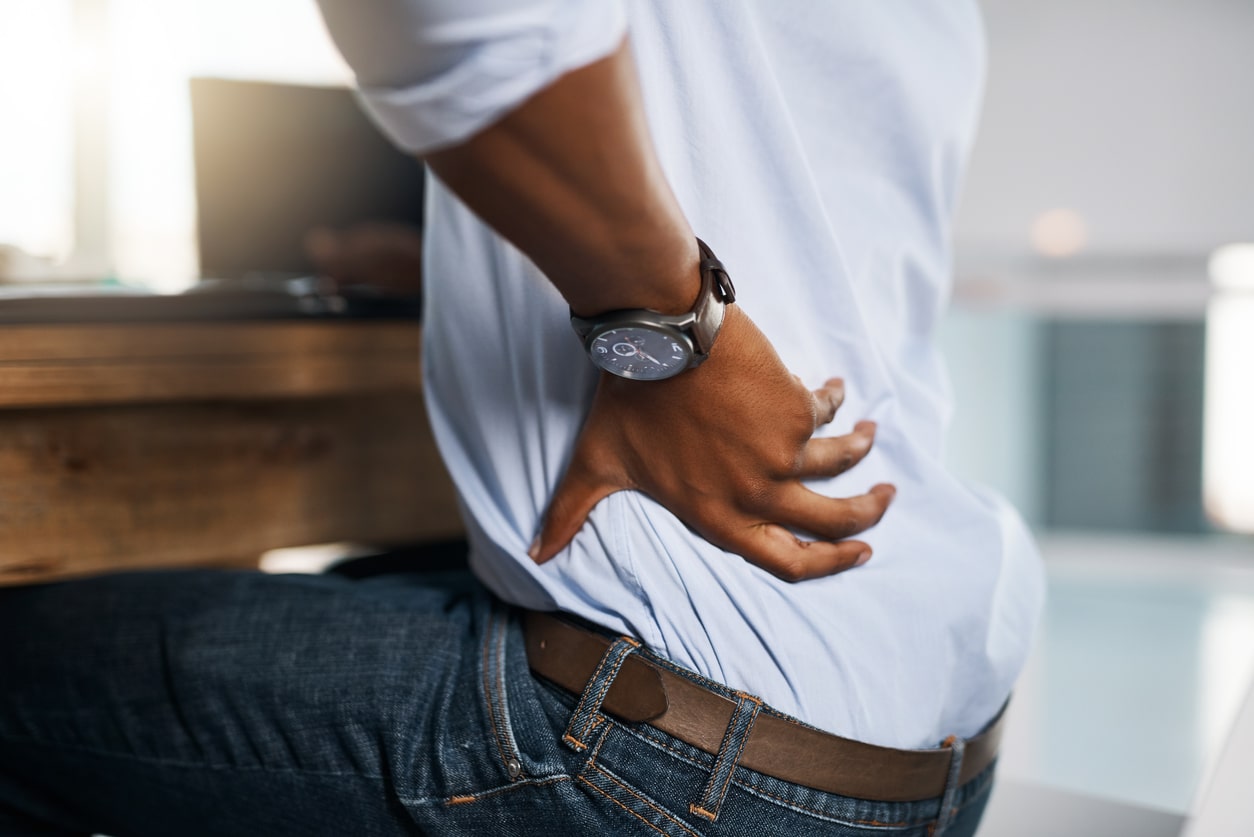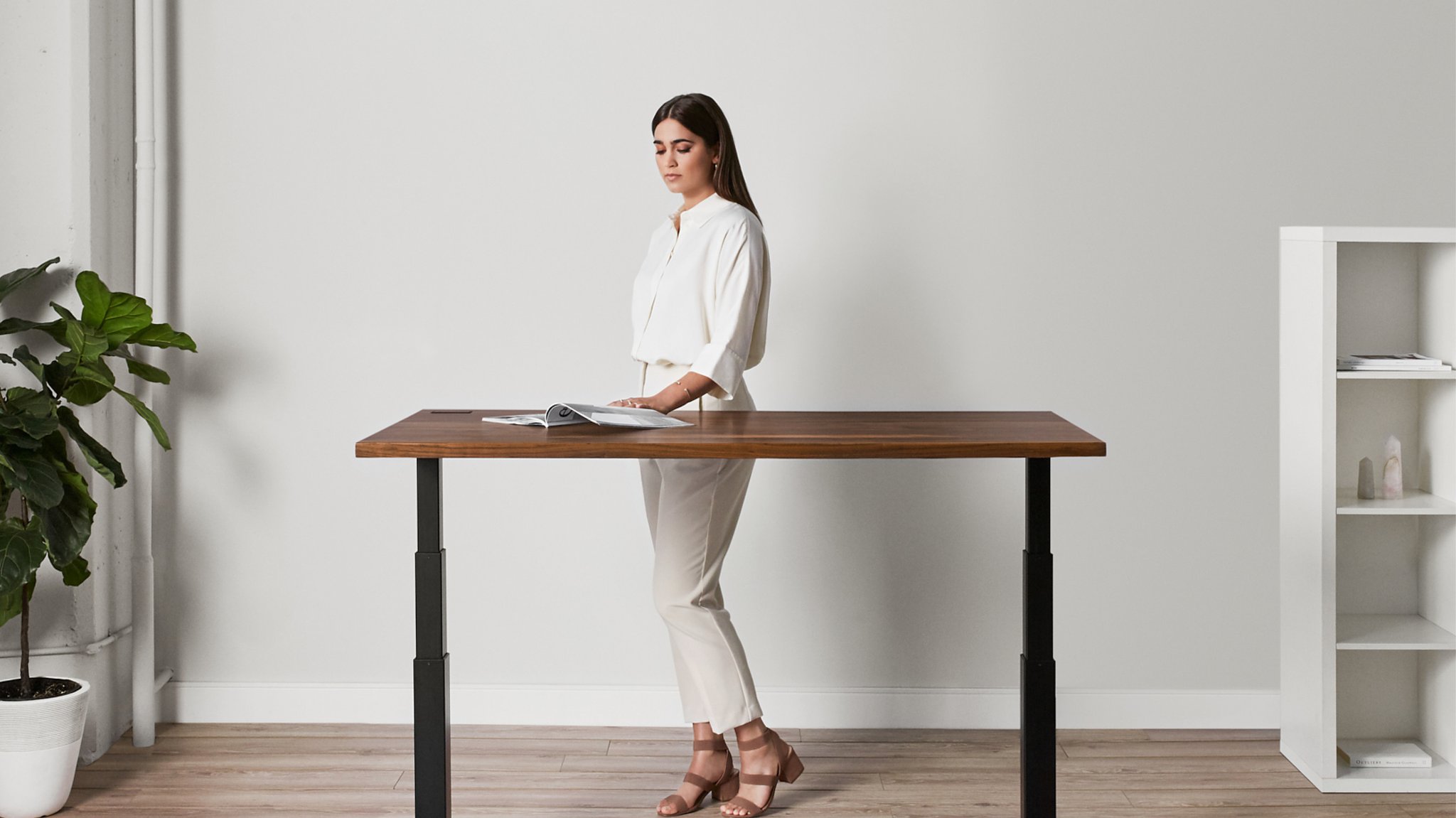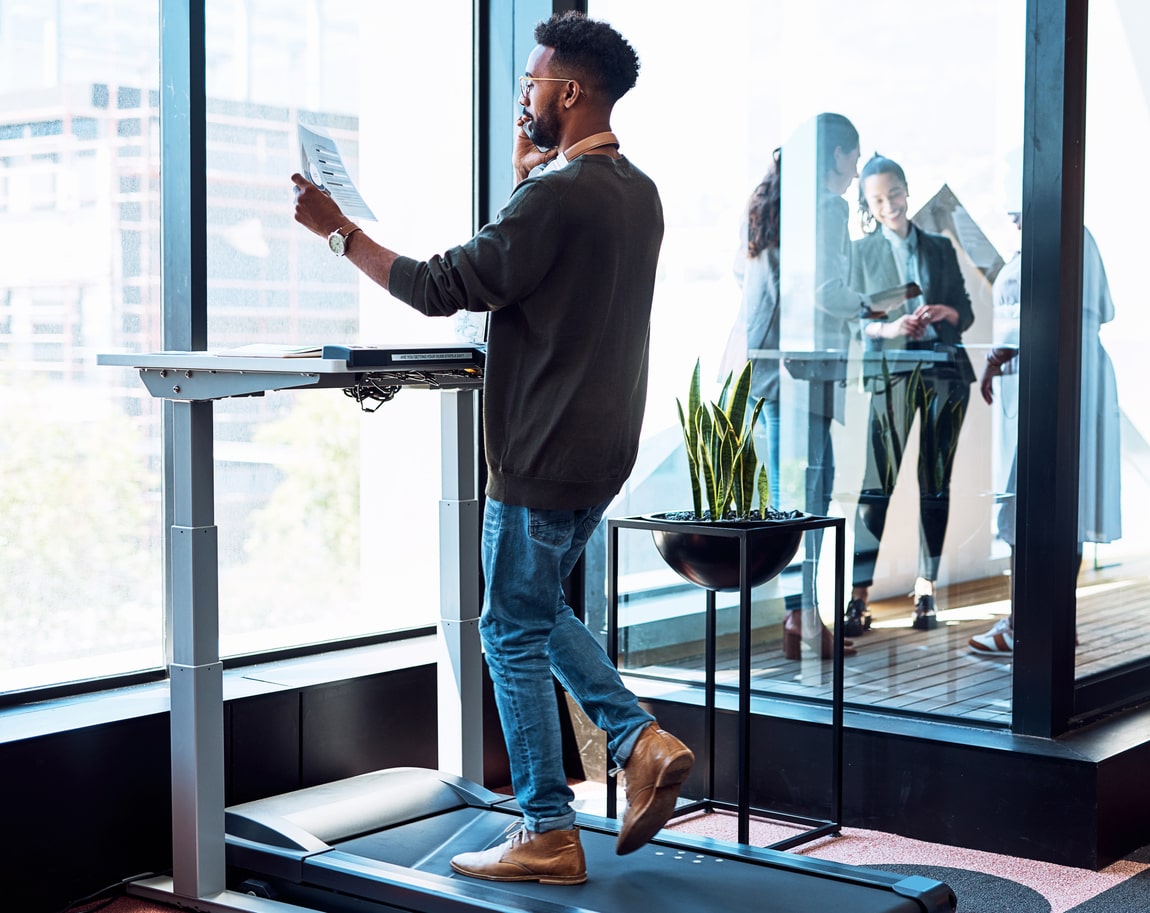
Various studies have proven that sitting all day has adverse effects on the body. According to researchers, people who use sit-stand desks decrease back and pain by as much as 50%, as opposed to people who sit at their desks. Standing desks help neck pain as well because they correct posture and keep the spine aligned.
If you’re suffering from severe back and neck pain, you might want to consider giving a standing desk a try. Here’s everything you need to know to determine whether this solution is for you.
How Do Standing Desks Help?
1) Prevent Slouching
If you spend a lot of time seated while working, you naturally end up in a slouched position, which causes an arch in the back. This is where a lot of back pain stems from because it puts a massive strain on both muscles and bones. Standing at your desk helps ensure you have a better posture than if you were seated.
However, standing doesn’t automatically mean you won’t ever slouch – people who spend most of their time on their feet can also end up with neck and back issues. The key is to adjust your stand desk to the appropriate height for you.
2) Improve Your Posture
Standing at your desk will encourage you to straighten your back and have a better posture, reducing back and neck pain.
To get a correct posture, your spine, head, and neck should all be aligned so you don’t feel the urge to slouch over. Don’t twist your hips: they should remain straight in order for you to reap the benefits fully. Your head should not droop forward at all and should actually lean back slightly, and your monitor should be at eye level to facilitate this.
If you’re able to create a 90-degree angle with your elbows by putting your wrists down flat on the desk, then you know you’re on the right track!
3) Encourage Movement
You’re a lot more likely to move around more when using a standing desk. If you don’t naturally shift position while working standing up, make sure you have frequent seated breaks to give your legs and feet a rest, shift your weight from one foot to another, take a short walk every hour (e.g. to the kitchen to refill your coffee), or do some stretches. These are just a few ideas for exercises you can do more easily when you’re not sitting, though there are hundreds of others!
Bonus Tip: Ease Into Standing While Working
An important thing to consider is making the transition from sitting to standing work slowly. Going from sitting all day to always being on your feet is a lot on the body, and could even worsen pain problems if done too abruptly. Ease yourself into it to avoid any further strain on your back and other parts of your body by standing for a few hours a day and increasing it gradually.
Conclusion
The short answer is yes, standing desks help back pain and neck pain, but only if you use them in the most beneficial way for you and your body. Make sure you do your research and ease yourself in so you can feel all the benefits that standing desks have to offer.
The Proper Way To Use A Standing Desk
Ultimate guide for setting your desk
“Remember, everyone is different and should be able to adjust their workspace to their own needs. Some of us have longer arms, or shorter legs. Some of us have weaker knees, or flatter foot arches. No matter what your specific needs are, the advantage of height-adjustable desks is their versatile nature – they can be customized to suit everyone.”




